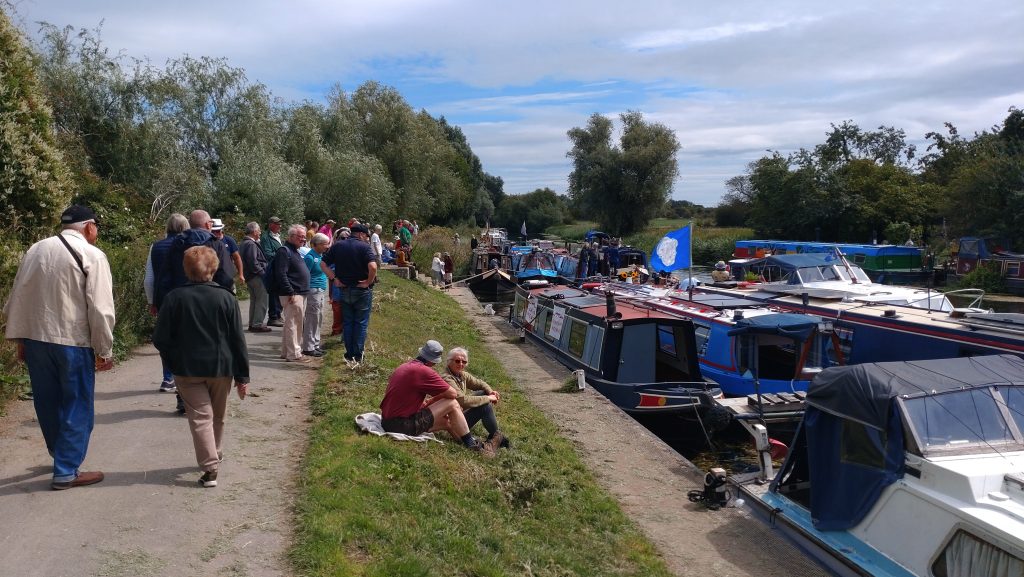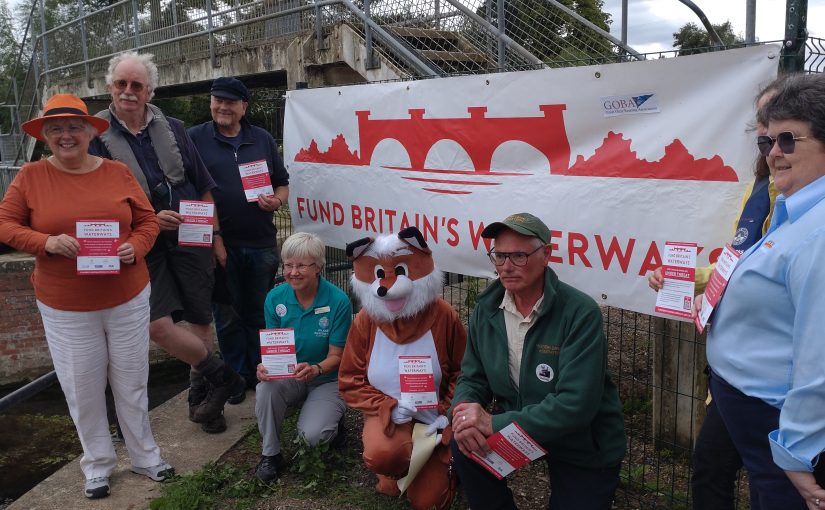Wealthy colleges, businesses and residents must help to fund repair of the Baits Bite and Jesus Green Locks
As widely publicised both locally and nationally, both Jesus and Bait’s Bite locks are affected by major structural degradation. The locks have been closed to navigation since May 2024. Temporary stabilisation works are due to start at Bait’s Bite, and further surveys of Jesus Lock are necessary to assess the cost of repair. But, as Sunday’s protest, organised by the FUND BRITAIN’S WATERWAYS national campaign which is helping to secure the future of Britain’s inland rivers and canals, made abundantly clear, the situation is urgent.

Stephen Tomkins of the Cam Valley Forum (CVF) – an organisation dedicated since 2001 to the protection of the Cam and its environment – says:
“With the current emphasis on restoration of chalk streams, many of us would probably prefer a free-flowing river, with a gravel bottom and lush aquatic plant growth, as in the cathedral city of Salisbury. But we are faced with reality. It is often forgotten that Cambridge was once a key inland port, providing access to the North Sea and the Continent via the Cam, Ouse and Wash, and allowing the transport of goods inland, including to the largest medieval fair in Europe on Stourbridge Common”.
The drainage of the fens and the construction of Denver Sluice on the River Great Ouse changed this, reducing river levels as tidal waters were excluded from the Ouse. By the end of the 17th century, both the university and the Corporation of Cambridge were complaining loudly about this. One result was that in 1702, the Conservators of the River Cam were set up under an Act of Parliament to regulate and maintain the river for navigation, which led to the introduction of locks and other infrastructure to help navigation.
With the arrival of the railway, and the development of the road network, the role of the Cam for transporting goods declined. But the economic importance of the Cam to city life has remained. If the Jesus and Baits Bite locks were to fail, the water levels would fall dramatically and fluctuate, in periods of low flow probably providing only a muddy, and at worst, fetid trickle. Punting and rowing would be impossible, the foundations of college walls would be exposed, and the once iconic views would no longer attract selfie-taking tourists.
The root of the problem is that the Conservators, who remain responsible for maintenance of the river, including the stretch between the two locks, has for many years not had the resources it needs. It has no financial support from the City Council, colleges, or University. It depends on its own capital savings and the annual fees paid to it by the owners of river craft, in particular commercial punting. As Clive Brown, a former Conservator states: “The Conservators have suffered for many years from underfunding. The cost of maintaining the river for navigation has to a major extent fallen on those who register their boats, particularly the punting industry. It is high time that the University, and the wider population who benefit from the river, start to bear some of the costs, either directly or through Council subsidies”.
The City Council is offering ‘support’ of various kinds, but CVF feels that much more immediate action is needed. Anne Miller, co-chair of CVF says: “We are deeply disappointed that a city like Cambridge, with some vastly wealthy colleges, global technology companies that generate over £50bn of turnover per year, and millionaire residents, cannot provide the funding needed. The £1.5 million needed for the temporary stabilisation work for each lock island, and the estimated £10-15 million needed for the ultimate replacement of each lock can surely be found.”
As CVF’s River Manifesto[1] puts it: “Are we too busy lecturing other people around the world about ‘saving rain forests’ when our own river is not what it could be? The River Cam, in this University City of world standing, should surely be an example to the world of achieving sustainable development”.
Those who benefit from the Cam, whether directly or indirectly, must dig into their pockets and contribute to its protection.
[1] https://camvalleyforum.uk/wp-content/uploads/2019/08/The-River-Cam-Manifesto-final2.pdf

